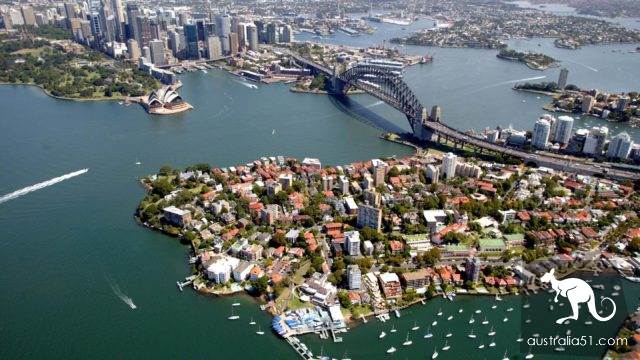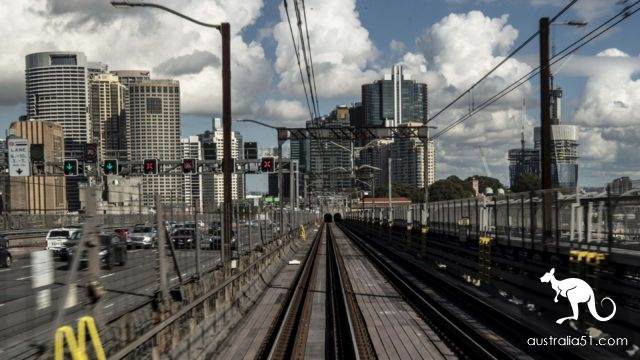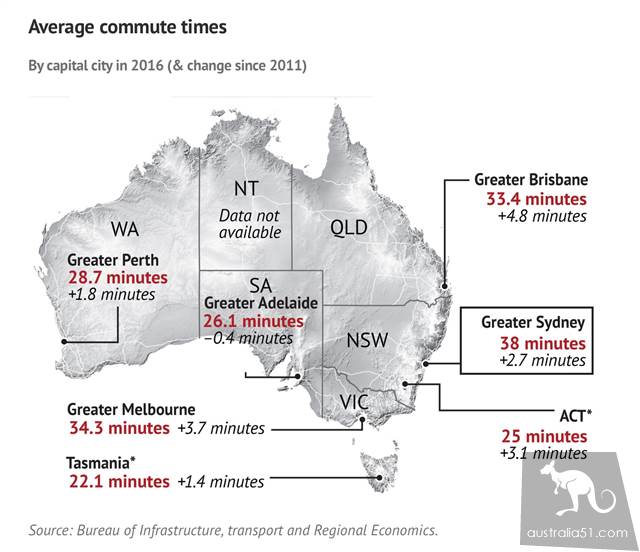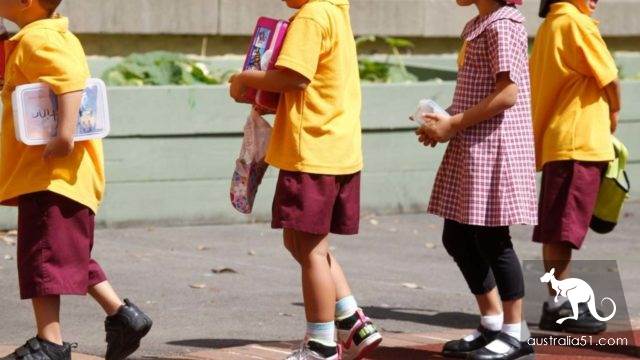What's good about Sydney? The answer to the question is elusive and almost mysterious.
It's hard to find affordable housing near the store, and it's hard to find a job with reasonable commuting hours. And once you add the expectation of choosing a school for your child and enriching your spare time life, including traveling abroad, the character is even more difficult.
Almost everyone is compromise: if you want to live in a beautiful view, you have to spend three hours a day shuttling between home and the office; it's easy to live near the station, but you can always hear the crashing of train; and you work hard to send your children to private school.

"one thing has changed," said Ron (Terry Rawnsley) of economics, an authoritative city. "you can't change rooms as easily as you did 20 years ago."
Despite the recent decline in Sydney's real estate market, Domain Group data show that the city's median house price is still above the 1 million yuan mark. This is 90% higher than it was ten years ago.
Sydney has many well-paid workers, but years of weak salary growth have dampened the spending power of households in the city. According to a poll released last year by Sydney Commission (Committee for Sydney), 10 per cent of residents in Sydney feel increased pressure on the cost of living.
Expectations of a higher-end lifestyle make trade-offs more complex.
For many people, the "average" now means that "every adult has a car, chooses a private school, goes abroad every few years on vacation, changes a new smartphone every two years, and has one or two smart devices per child," said Sydney-based social researcher Mike Langdon (Mark McCrindle).
Many people refused to compromise and simply leave the city. According to a recent analysis of census data released by the Sydney Morning Front, the city of leave has traveled to other parts of Australia every day for the past four decades, with only 85 people entering Sydney. Last year, nearly 120000 leave new states went to other states, most of them from Sydney.
Even so, Sydney's diversity of economic and a large number of well-paid jobs in knowledge-based industries, including finance, professional services, IT, engineering, marketing and media, remain attractive. The city continues to attract overseas immigrants.
So what sacrifices do Sydney families have to make?

[医]Housing problem
The ups and downs of the Sydney real estate market are always headlines, but less attention has been paid to the profound ways in which we behave.
The high cost of a well-positioned house in Sydney is the basis for many of the sacrifices made by locals.
More and more families choose to live in a high density near the main employment and transportation hub. Units and apartments now account for more than 1/4 of Sydney homes, about twice the national average.
Many young people in Sydney choose to rent in a well-positioned community rather than buy in an inconvenient place, according to McLangdon's research.
According to census data, the proportion of households renting in Sydney has risen steadily over the past decade. A recent study by (Grattan Institute) at the Glatan Institute found that between 2011 and 2016, 87 per cent of communities in Greater Sydney had a decline in the proportion of homeowners.
Roensley, a economics home at SGS Economics and Planning, a consulting firm, notes that families buy or rent a smaller home near their unit or school while retaining a larger house on the outskirts of the city or farther away, a trend that has not increased much, but is growing.

A long commute
Thousands of Sydney people have sacrificed commuting time for housing and lifestyle choices. This is one of the most common sacrifices in Sydney.
The Infrastructure, Transportation and Township economic Bureau estimates that about 2 million Australians need 90 minutes or more a day in 2016, many of them in Sydney and Melbourne.
Ronsley says there has been an increase in "long-time commuters" in big Australian cities-those who spend hours a day going to work.
There is evidence that workers are willing to continue commuting longer in exchange for higher wages. A recent study by Deloitte found that the average one-way commute time for CBD workers in Sydney was 63 minutes, nearly 70 percent longer than the city average.
But in the course of strong population growth over the past decade, Sydney has not done well in increasing the supply of economic suitable housing in areas that provide good jobs and other key services, Ronsley said.
``That's why you're starting to get these unusual results, people work for two hours, or they have two houses, '' he said.
working place
The trend of job market, especially dual-worker family proportion is very high, has a great impact on family choice.
Many Sydney families have made complex trade-offs in terms of work, McLangdon said. "data on busyness and stress show that many couples take on more work than they really can, but they need two incomes," he said. "it's a financial decision, not a career or lifestyle decision-it's a trade-off between time and money."
In other cases, job-related trade-offs are not about income, but about catering to two time-consuming careers.
In some cases, the arrangement of shift work will determine the way of life. Some workers, such as the police and other emergency workers, work full-time with 12-hour shifts three times a week. As a result, it may be more convenient to live on the coast of central or Blue Mountain, as the number of commuting per week is reduced (but longer).

choice of school
The proportion of students in new state public schools is expected to grow over the next decade. Lindfield Learning Village and Inner City High have been packed with new students, while tuition fees at some of Sydney's top private schools have soared by more than 25 percent over the past six years.
Parents who have attended private schools may prefer to send their children to private schools, McLangdon said. If families live in lower-priced cities or towns, many parents will choose private schools. If families attach great importance to rich life experiences and especially travel abroad, the money saved from choosing public schools can be used to take care of their children on regular educational trips.
give birth to
One sacrifice made by Sydney women is to delay giving birth and possibly reduce the number of children.
A recent study by Parr (Nick Parr), a demographer at the University of Macquarie (Macquarie University), shows that there is a strong trend for women in many parts of the city to postpone childbearing until they are in their 30s.
Near Paddington-Moore Park, 90 per cent of mothers over the age of 30 gave birth between 2011 and 2015, the highest proportion in Sydney.
The birth rate-a measure of the number of children per woman-has fallen to very low levels in many Sydney suburbs.
Professor Parr found that Sydney had the highest proportion of women aged 35 and 39 in 20 areas, mainly in the city's relatively wealthy inner east and northern regions.
Women start a business first and then start a family is also a driving force in this trend.
But the high cost of housing in Sydney's inner urban areas may also play a role, as women can save down payments or take on large mortgages if they delay giving birth. Areas with extremely low birth rates for women under the age of 30 usually overlap with high house prices in suburbs.
Some Sydney families may choose to have only one child because of housing costs and other spending preferences, such as private schools and overseas travel.